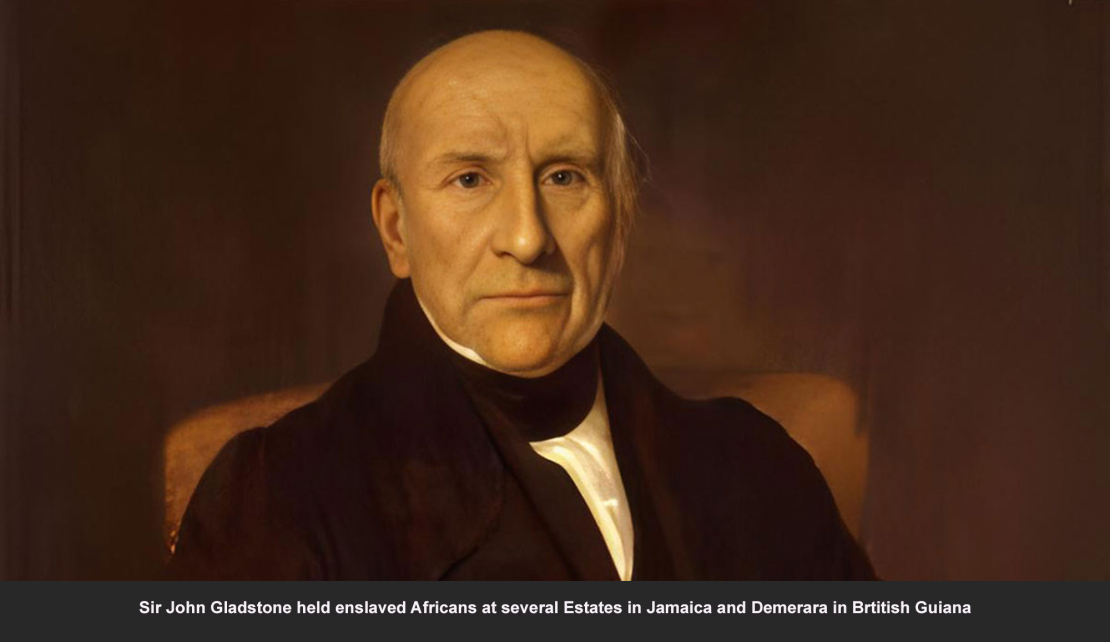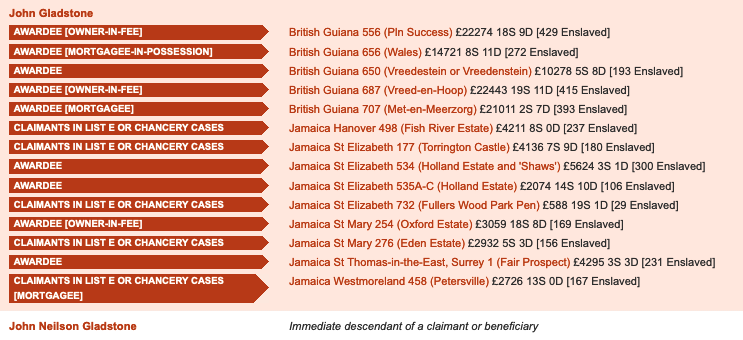JAMAICA | Enslaver John Gladstone held enslaved Africans in St. Elizabeth, Hanover, St. Mary and St. Thomas

MONTEGO BAY, Jamaica, August 26, 2023 - The descendants of Sir John Gladstone, First Baronet of Fasque and Balfour,on Friday offered apologies for his actions in the Trans-Atlantic Slave Trade as it related to his holdings iin Demerara, now Guyana. But Gladstone also had some 1611 slave holdings, at eleven plantations across Jamaica.
A brief look into his history indicate that Sir John Gladstone, 1st Baronet of Fasque and Balfour, was a Scottish merchant, planter and Tory politician best known for being the father of British Prime Minister William Ewart Gladstone.

Through his commercial activities he acquired ownership over several slave plantations in the British colonies of Jamaica and Demerara-Essequibo; the Demerara rebellion of 1823, one of the most significant slave rebellions in the British Empire, was started on one of Gladstone's plantations. This Scottish merchant grew wealthy as a slave holder and sugar-plantation owner.
At the time of the abolition of slavery in 1833, he owned over 1611 slaves across his plantations in Jamaica.
John Gladstone also owned a significant number of slaves in Demerara, which is now part of modern-day Guyana. In Demerara, he was one of the most prominent slave owners.
At the time of the emancipation in 1833, John Gladstone owned approximately 1,702 slaves in Demerara alone.
With help from his son William, Gladstone was awarded a payment as a slave owner in the aftermath of the Slavery Abolition Act 1833 with the Slave Compensation Act 1837.
Gladstone's claim was the single largest of any recipient made by the Slave Compensation Commission and he had the largest number of slaves. He received significant compensation from the British government
John Gladstone was compensated for a total of approximately 1,702 slaves in Demerara. Additionally, the record shows that he owned over 1,611 slaves in Jamaica. Combining these figures, John Gladstone was compensated for over 3,000 slaves across his plantations in the British Caribbean.
The exact total might vary slightly based on specific records, but it's clear that he owned and was compensated for several thousand slaves.
 This made him one of the largest recipients of compensation from the British government, as he received £106,769 for the loss of his slaves in Demerara, a sum that was a considerable fortune at the time.(equivalent to £10,320,000 in 2021).
This made him one of the largest recipients of compensation from the British government, as he received £106,769 for the loss of his slaves in Demerara, a sum that was a considerable fortune at the time.(equivalent to £10,320,000 in 2021).
After the abolition of slavery, John Gladstone sought indentured labourers from India to work in his sugar plantations.
The conditions imposed on these indentured labourers were so appalling that they fled in numbers and the 'experiment' was abandoned by Gladstone.
Whilst trying to recruit indentured labourers, he wrote that the work in the sugar plantations was light and conditions generally good, including schools and medical attention.
This was a picture he had derived from information given by plantation managers, who did not communicate the routine abuse of slaves nor their miserable conditions of malnutrition, overcrowding, and overwork.

 En
En  Ar
Ar